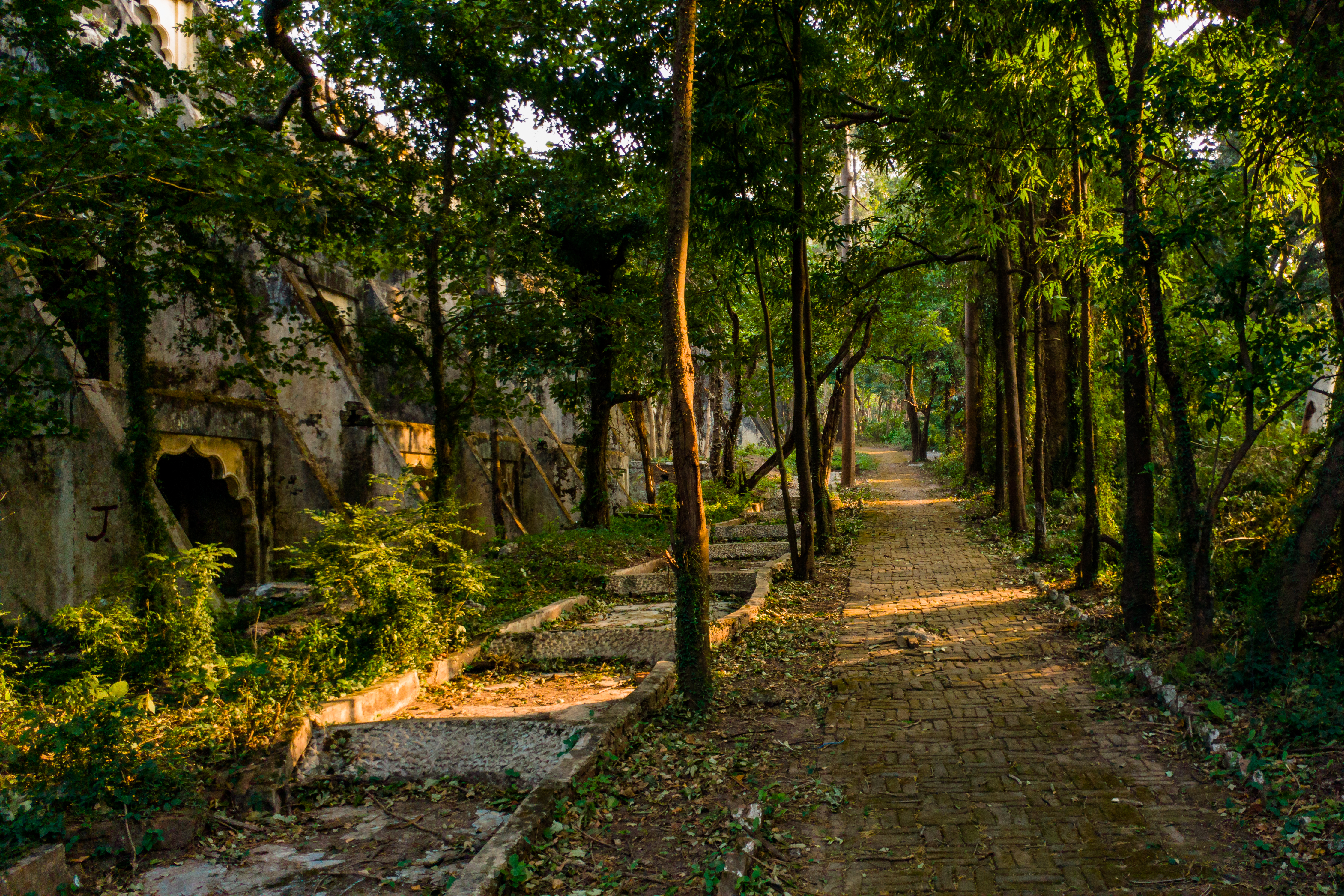Inside the Beatles' abandoned Indian ashram that keeps visitors coming decades later

The Beatles' abandoned ashram in Rishikesh, India in 2018. (Photo by Ivan Komarov/Creative Commons)
The path to the Beatles Ashram, once the tranquil retreat of the famous British band, is now overgrown with lush plants reclaiming the crumbling structures. Tucked away in the Himalayan foothills, this abandoned Maharishi Mahesh Yogi Ashram was a brief escape for the Beatles from their hectic lives in the spotlight.
The Beatles Ashram—fondly called Chaurasi Kutia (84 huts) by locals—rests on the eastern banks of the Ganges River. Initially, it was the International Academy of Meditation, where followers of Maharishi Mahesh Yogi sought enlightenment through Transcendental Meditation. However, it truly captured the world’s attention during the dynamic decades of the 1960s and ‘70s.
For some visitors, the haunting atmosphere can be disappointing all these decades later.
“It’s so poorly maintained and looks haunted,” said Priya Sukhvani, a 37-year-old banker from Bangalore and lifelong Beatles fan.
She had long dreamed of visiting the sacred grounds where her musical heroes temporarily found zen.
Others, however, remain emotionally tied to these crumbling remains despite the disrepair. Muthukumara Shiv Acharya, 60, who studied under the Maharishi, tries to visit at least each year.
“Even after Guruji's death, I have a profound connection to this ashram,” he said. “The Maharishi had followers worldwide, but his incredible legacy, sadly, has decayed with no one to protect these hallowed grounds.”

The Beatles' abandoned ashram in 2010. (Photo by Dr EG/Creative Commons)
In 1968, at the height of their fame, the Fab Four sought refuge in these secluded structures to meditate under the guidance of the famous guru. For several transformative weeks, they immersed themselves in ancient teachings and self-discovery, emerging with a deeper spiritual awareness that profoundly influenced their later musical expressions. In the process, they penned 48 songs, including the iconic White Album.
It had been the year before when the Beatles introduced Maharishi Mahesh Yogi to the British public by attending one of his seminars in Wales. The event was significant, but ultimately cut short due to the sudden death of their manager and friend Brian Epstein. After wrapping up their film Magical Mystery Tour, the band decided to head to India to explore Transcendental Meditation.
George Harrison and John Lennon were particularly enthusiastic about meditation and became advocates for the Maharishi's Spiritual Regeneration Movement. Their endorsement gave the guru widespread fame after he became associated with the world's biggest music group.
For Arkaja Das, 32, the abandoned state of the area sparks imagination about that transformative six-week period when Rishikesh became a rock star’s dreamscape of enlightenment. As she gazed upon the skeletal remains of living quarters, meditation chambers, and teaching spaces, Das said he could picture the band members in residence.
“Being here allows you to feel more intimately connected to the Beatles’ spiritual journey,” she said. “As you walk the grounds, you can vividly imagine them here finding themselves in this paradise away from Beatlemania’s madness.”
The Fab Four embraced the Maharishi’s teachings, hoping to find higher truths. As well as the Fab Four, there were around 60 other people training to be TM teachers including the Beach Boys’ Mike Love and actress Mia Farrow.
That period of immense introspection gave birth to beloved White Album tracks like “Dear Prudence” and “Sexy Sadie.” However, the band abruptly departed amid scandal when rumors swirled of their guru’s inappropriate sexual behavior toward women in his inner circle.
Despite it ending on a bad note, the Beatles’ visit made a tremendous impact and not just on the album.
“The relationship between the Beatles and the Maharishi brought about an enormous interest in the West in Indian clothing, meditation, yoga and the playing of the sitar,” wrote Paul Oliver in his book Hinduism and the 1960s: The Rise of a Counter-Culture.

The Beatles' abandoned ashram in 2018. (Photo by Ivan Komarov/Creative Commons)
During the 1970s, the Rishikesh ashram fell into disrepair, left to crumble for over three decades. By 1981, the Indian government reclaimed the land, incorporating it into what is now the Rajaji Tiger Reserve. From the 1990s onward, the ashram became a canvas for graffiti, particularly as a tribute to the Beatles, left by trespassing visitors. In 2007, Canadian actress Maggie Blue O'Hara announced ambitious plans to revitalize the property into a haven for New Delhi’s street children.
The fate of the ashram later became a hotly debated political issue. In 2011, the Uttarakhand state government proposed building a sanatorium on the site. Its potential as a tourist attraction became a focal point during the 2012-13 Uttarakhand Legislative Assembly election, but was ultimately forgotten.
In 2012, street artist Pan Trinity Das initiated The Beatles Cathedral Gallery to revive the property’s former lecture hall, but faced opposition from forestry department officials. However, in February 2016, following its opening to the public in December 2015, the initiative was reborn as the Beatles Ashram Mural Project. Four artists were invited to create murals.
Despite talk of an impending renovation and redevelopment project last year, there are currently no tangible efforts have been seen on the ground—leaving the future of the ashram uncertain.
Today, fans and disciples make the remote pilgrimage to these haunting ruins along the Ganges in hopes of channeling the remaining mysticism and insights that so profoundly impacted the Beatles’ artistic and spiritual awakening.
For over 14 years, Anshu Chaudhary has worked as a tour guide in the city of Rishikesh. And the 33 year old said he has noticed that one sight remains a top destination for visitors: "The crumbling ruins of the Beatles' abandoned ashram.”
“Most tourists prioritize seeing the ashram. As a guide, I’ve been hundreds of times," Chaudhary said. “There’s certainly a spiritual energy or draw to the place for people. Maybe it’s because they want to see firsthand where the famous Beatles chose to find enlightenment.”—Religion Unplugged





